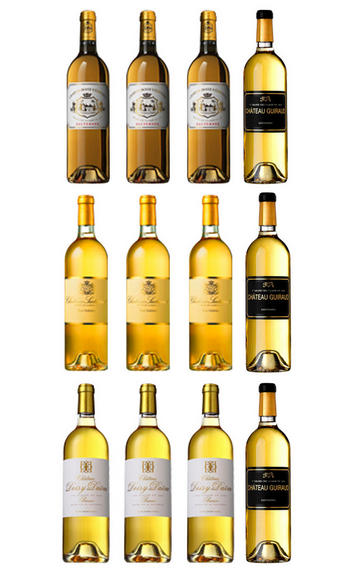
2011 Liquid Gold Assortment Case Sauternes
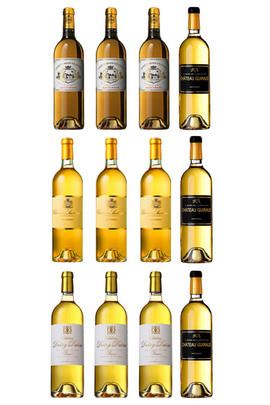
About this WINE
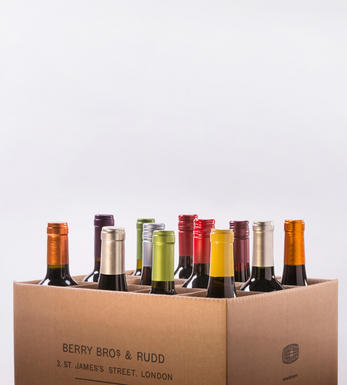
Assortment Mixed Cases
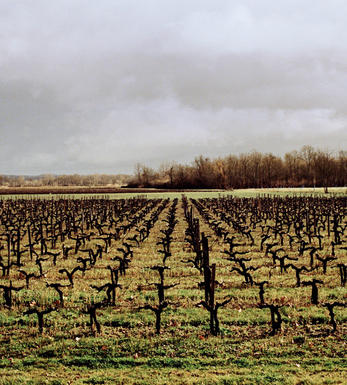
Bordeaux
Bordeaux remains the centre of the fine wine world. The maritime climate on the 45th parallel provides for temperate winters and long, warm summers, perfect conditions for growing grapes suited to the production of classically-constructed, long-lasting wines. This vast region of 120,000ha of vineyards (four times the size of Burgundy) is home to 10,000 wine producers and 57 different AOCs. Red now makes up 88 percent of Bordeaux wine, and is usually referred to as Claret. The origin of this name was to differentiate the lighter-coloured wines of the coastal region from the deeper "black" wines from up-country regions.
The Left Bank, comprising the wine regions of the Médoc, Pessac-Léognan and Graves are planted predominantly with Cabernet Sauvignon, which thrives on the gravelly soils left by the ancient course of the river. This is a thick-skinned variety which ripens late, producing powerful, tannic wines capable of long ageing. It is blended with Merlot, Cabernet Franc and sometimes Petit Verdot. The highlights of the Médoc are the four communes of St- Estèphe (blackcurrant concentration); classical, cedarwood and cigar-box Pauillac; richly-fruited St Julien; and elegant, fragrant Margaux.
On the Right Bank, most famously in St-Emilion and Pomerol, it is the fleshy Merlot grape which prevails, sometimes supported by Cabernet Franc. Here the soils are more mixed, with gravel and clay underpinning the rich, fruity wines of Pomerol. Styles vary more in St-Emilion, depending on the predominance of sand in the lower-lying slopes, or limestone on the hillsides and plateau.
By the 18th century, individual properties - known as châteaux, however humble - were becoming known for the quality of their wines and in 1855, those of the Médoc (plus Haut-Brion, a property commended by Samuel Pepys as early as 1663) were classified into five levels of classed growths. Lafite, Latour, Margaux and Haut Brion were cited as First Growths, to whose ranks Mouton Rothschild was elevated by presidential decree in 1973. Beneath the ranks of the classed growths lies a raft of fine châteaux known as Crus Bourgeois, while a host of less well-known "petits châteaux" still makes attractive, enjoyable Claret at affordable prices.
The other jewel in the Bordeaux crown is the district of Sauternes, making some of the most outstanding sweet white wines in the world (from the likes of Châteaux d'Yquem, Rieussec and Climens). The foggy autumn mornings along the banks of the Garonne River near Sauternes and neighbouring Barsac enable the noble rot, botrytis cinerea, to form on the skins of the grapes, which can still ripen in the afternoon sun as late as the end of October or early November. The Sémillon grape is the prime component, but Sauvignon Blanc and a little Muscadelle are also planted to provide insurance if the weather is less favourable to Sémillon, as well as offering a counterpoint in flavour.
There are many inexpensive dry white wines - more Sauvignon than Sémillon - from regions such as Entre-Deux-Mers and Graves, with just a handful of outstanding properties located in Pessac-Léognan. The most famous of the great dry whites hail from Châteaux Haut Brion, Laville Haut Brion and Domaine de Chevalier.
The finer wines of Bordeaux are sold en primeur in the late spring following the harvest, some two years before the wines are ready for physical delivery. The châteaux offer their wines through a system of Bordeaux négociants (brokers) who sell them on to importers round the world. Prices vary enormously from one vintage to another, dependent on perceived quality and world demand, which shows no signs of diminishing, especially for the great years.
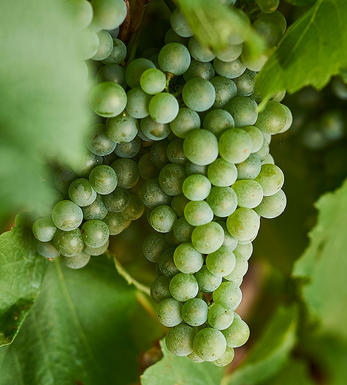
Sauvignon Blanc & Sémillon
The blend used for White Graves and Sauternes and rarely encountered outside France. In the great dry whites of Graves, Sauvignon Blanc tends to predominate in the blend, although properties such as Smith Haut Lafite use 100% Sauvignon Blanc while others such as Laville Haut Brion have as much as 60% Sémillon in their final blends. Sauvignon Blanc wines can lose their freshness and fruit after a couple of years in bottle - if blended with Sémillon, then the latter bolsters the wine when the initial fruit from the Sauvignon fades. Ultimately Sauvignon Blanc gives the wine its aroma and raciness while Sémillon gives it backbone and longevity.
In Sauternes, Sémillon is dominant, with Sauvignon Blanc playing a supporting role - it is generally harvested about 10 days before Sémillon and the botrytis concentrates its sweetness and dampens Sauvignon Blanc`s naturally pungent aroma. It contributes acidity, zip and freshness to Sauternes and is an important component of the blend.


Buying options
Add to wishlist
Description
In great Sauternes vintages we offer our “Liquid Gold” selection. We pick our favourites from the vintage in terms of both quality and value, and this is a fantastic way to enjoy a selection of the vintage’s best sweet wines. The wines are packed in their own wooden cases, and are offered in halves (six halves of each wine) or bottles (three bottles of each wine).
Our picks this year are Châteaux Doisy-Védrines, Doisy-Daëne, Guiraud and Suduiraut. 2011 is a great vintage for Sauternes.
Whilst the 2001 vintage may never be surpassed, 2011 is easily at or above the level of the brilliant 2007 vintage, and may well match 2001 in some cases. The wines have flesh, weight, energy with fresh acidity to boot. This is an exceptional case for the cellar.2011 Ch. Doisy-Védrines, Barsac
One of the stars of the sweet wines this year and seemingly indicative of a strong showing for the commune of Barsac. The bouquet is truly a thing of beauty, with pure, vivid aromas of citrus peel, apricot and honey. The palate is again wonderfully pure and clean, and the length, albeit with lowish acidity, impressive. The sweetness is very clean and not at all cloying.
“The most extensive of the Doisy estates has made a stunning wine in 2011: fine, elegant and beautifully restrained with peachy concentration balanced by flavours of citrus peel and pink grapefruit. Powerful and dense, this is rich yet refreshing on the palate, promising up to a decade of bottle development. 8+ years. 95 points.” Tim Atkin MW
2011 Ch. Doisy-Daëne, Barsac
“Nothing better than a fresh glass of Sauternes!! Every time I have one I just think “why do I not have this more often!!”. Following from great 2001-2005-2009-2010 the 2011 is yet again a very strong Sauternes vintage and Doisy Daene is one of the best when it comes to the combination of both elegance and freshness. Although sweet it is one of these wines that drinks effortlessly. Lovely perfumed sweet nose, pineapples and peach. A touch sweeter than usual for this wine but extremely well balanced and lovely fresh elegant long finish.”
(Max Lalondrelle, Berrys’ Fine Wine Buying Director)
“A wine that has "more of everything, but is still in balance" according to Fabrice Dubourdieu, this is a super concentrated sweet wine with a massive 175g/l of sugar, a touch of smoky reduction and exotic characters of pineapple, barley sugar and citrus fruit. Delicious now, but will age for a decade or more. 10+ years. .”
95 points -Tim Atkin MW2011 Ch. Guiraud, Sauternes
“Since being sold a few years ago to a consortium of quality-minded Bordeaux producers and the Peugeot family this famous old Sauternes property has made steady progress. This year it has excelled itself with a wine of unusual elegance, in slight contrast to the slightly richer style it is more known for. The bouquet displays an abundance of stone-fruit aromas with hints of coconut and citrus peel. The palate has wonderful purity and finesse with a long finish of piercing precision.”
Alun Griffiths MW, Berrys' Wine Buying Director
“As it did in 2009, this bio-dynamic estate has made one of the sweet wines of the vintage, with a marked percentage of Sauvignon Blanc adding verve and freshness to the blend. There's a tangy, citrus peel note underlying the 139g/l of sugar here, giving some backbone to the sweet, exotic fruit flavours. 8+ years. .”
95 pointsTim Atkin MW
2011 Ch. Suduiraut, Sauternes
“Tasted twice, and both times impressing with its finesse. A wonderful bouquet of honeyed orange zest and acacia, followed by great elegance on the palate with a laser-sharp sense of natural sweetness. Purity again the hallmark, as seems to be the case this year with the Sauternes.”
“Stylishly oaked with viscous, peach and honeycomb fruit, this is subtle and well balanced with luscious stone fruit flavours, a hint of lemon tartness, good freshness and enough acidity to balance the 150g/l of sweetness. This should develop more gravitas in barrel over the next year as the wine fattens out. 8+ years. .”
94 pointsTim Atkin MW
wine at a glance
Delivery and quality guarantee